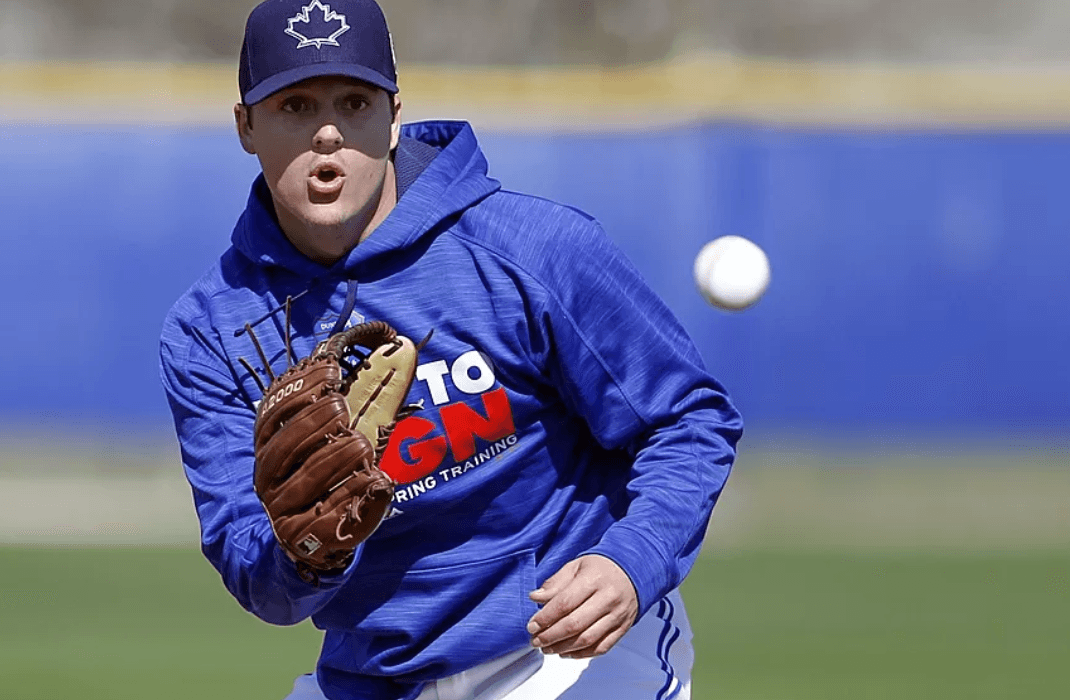#BlueJays have traded Aaron Loup to the #Phillies for a prospect per sources
Aaron Loup dealt to the Phillies

The longest tenured member of the Toronto Blue Jays has been dealt to the Philadelphia Phillies. That’s right! I’m serious! Aaron Loup, who debuted with the team in 2012, was the longest tenured Blue Jay!
As much as people like to scoff at Aaron Loup, he was an effective soldier for the Blue Jays over the course of seven seasons. He originally burst out of nowhere in 2012 and had excellent followup seasons in 2013 and 2014. He kind of lost his role on the 2015 and 2016 teams but rebounded nicely in 2017. Over 368 appearances for the Blue Jays, Loup posted a a 3.47 ERA while striking out 8.4 batters per nine. He’s set to become a free agent at the end of the season, so it’s no surprise the Jays tried to get something of value for him before letting him walk for nothing.
Source: Blue Jays will receive RHP Jacob Waguespack from Phillies for Aaron Loup.
So the return is righty starter Jacob Waguespack, who isn’t in Philly’s top-30 prospects right now. Between Double- and Triple-A he’s got a 4.68 ERA over the course of 21 appearances (15 starts). Digging a little further into his stat line, Waguespack appears to be a very good home run preventer, as he’s allowed just four bombs over 82 2/3 innings this season.
Carson Cistulli did a thing on Waguespack prior to the season for FanGraphs…
Whatever the future outcome for Waguespack, the present outcome is already sufficiently improbable. During his junior season at Ole Miss, Waguespack worked in relief exclusively, recording somewhat uninspiring statistical indicators. Undrafted that June, he signed with the Phillies as a free agent anyway.After passing his first couple professional seasons in the bullpen, Waguespack moved to the rotation this past May with High-A Clearwater. The success was immediate. Over a 10-start stretch, he recorded strikeout and walk rates of 24.7% and 5.7%, respectively, in 47.0 innings. The performance earned him a promotion to Double-A Reading.Despite having been overlooked in the draft, Waguespack nevertheless possesses some attributes more commonly associated with actual prospects. Like he’s a well-proportioned 6-foot-6, for example. And also he sits at 93 mph or thereabouts. His mechanics aren’t ideal — he wraps the ball somewhat awkwardly behind his body — but the return on everyone’s investment so far is substantial.
And here’s another report from 2080 baseball:
Waguespack came the Phils as a non-drafted free agent in June, 2015, and though he continued to work from the bullpen in the low minors as a pro, the Phillies have been testing him as a starter since mid-May, and following a 10-start run at High A Clearwater, he was promoted to Double-A Reading on July 31.Waguespack’s delivery is full of moving parts, with a deep stab in the back and a big wrap, an extra-long arm action, shoulder tilt, and a drop-and-drive push that lowers his release point dramatically, all but eliminating the advantage of his big frame. He finishes way out over his plant foot, and it’s tough to time up and repeat the actions consistently. It contributes to his below-average control, with a 3.4 BB/9 rate over 105 innings this year (roughly in line with his 3.6 BB/9 over 72 innings in the Sally League in 2016), and it also makes him slow to the plate, with 1.52-to-1.60 second delivery times that bring some added risk when he’s working with runners on base.His fastball was 91-to-94 mph, and while it showed some run at the higher velos, the movement was below average and it was lacking plane and mostly true. He struggled for feel for the 84-to-87 mph slider in this look, but it has the ingredients of an average pitch. It had short break and looked slurvy, but he flashed more bite when staying on top of it at its lower velo. His curveball was below average at 78-to-80 mph, and while he could drop it in for first-pitch strikes with 11-to-5 shape, the break was gradual and lacking snap. His changeup was fringe average at 81-to-83 mph, showing fading action and some tumble, and he showed confidence to use it in fastball counts to keep hitters honest.Waguespack’s below-average control and lack of meaningful movement will make it tough to turn over lineups at the higher levels with consistency. The funk of his delivery can offer a change-of-pace look out of the pen, but his ceiling is limited to that of a Role 30, AAAA arm that’s best used in middle relief.
Breaking News
- Where do the Blue Jays find their next Max Scherzer?
- Blue Jays: 4 important instances to reflect on before putting Game 7 to bed
- Blue Jays gain early offseason win with Shane Bieber opting in
- Shane Bieber forgoes free agency, opts into $16-million 2026 player option
- Should the Blue Jays re-sign Bo Bichette?
